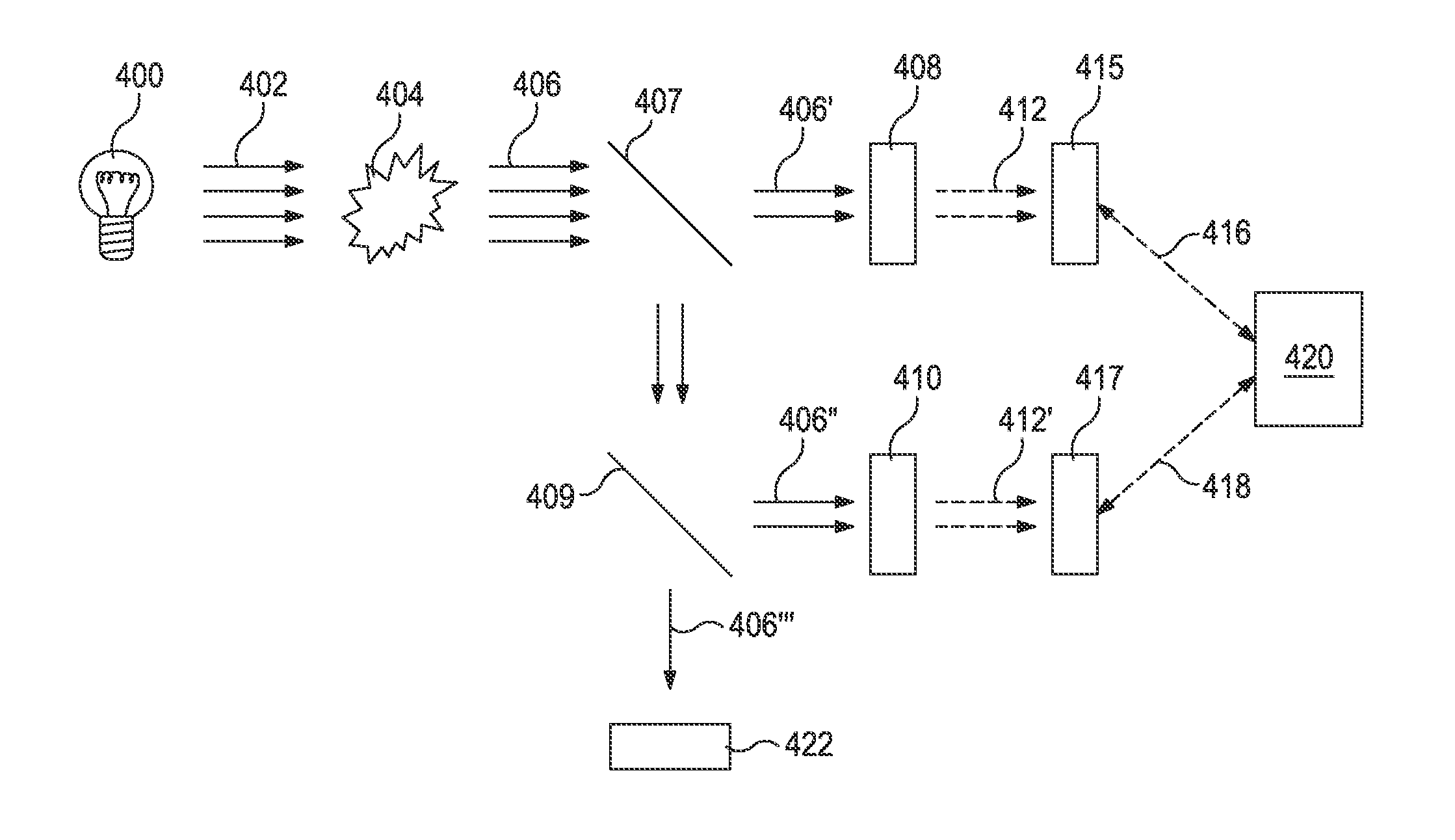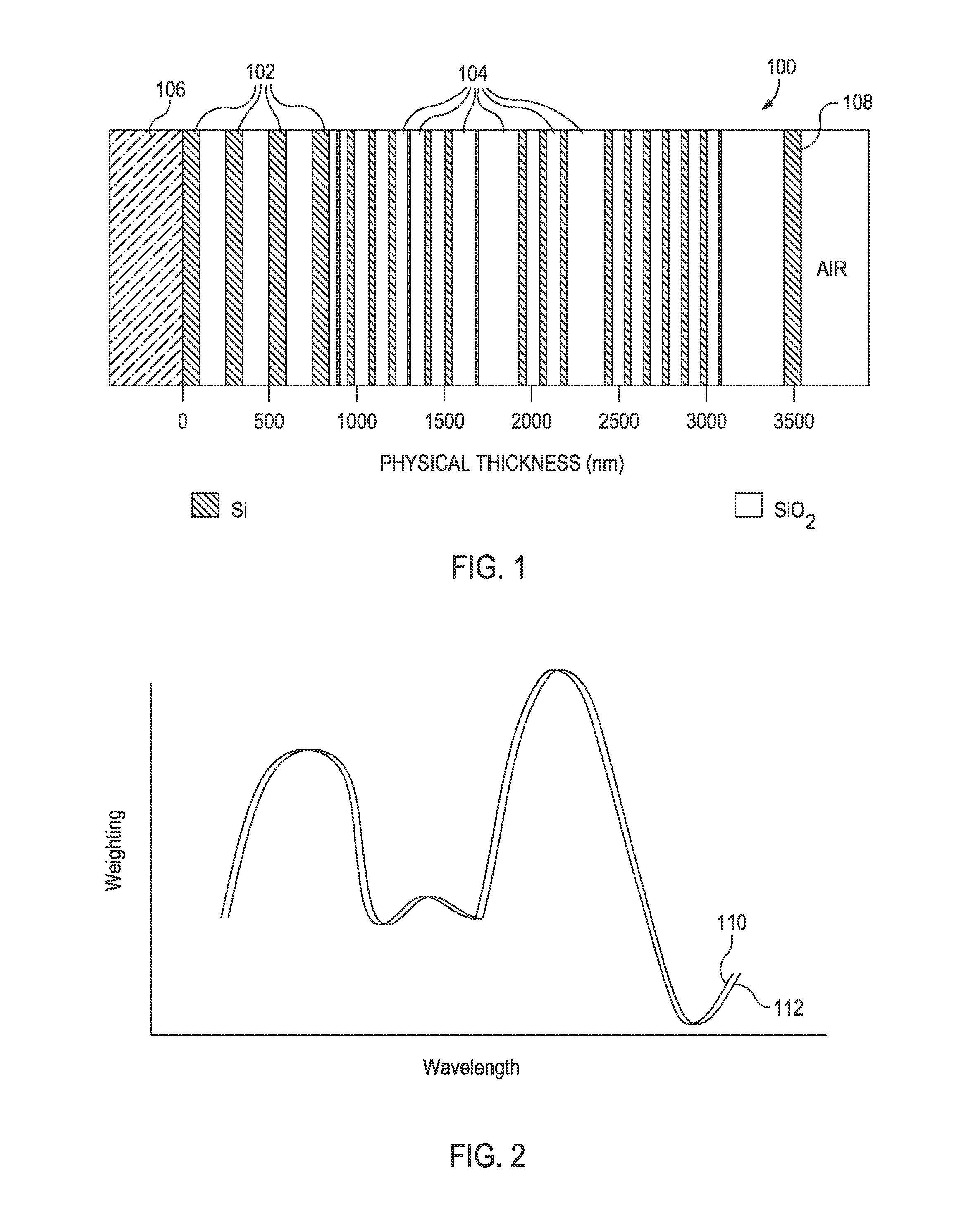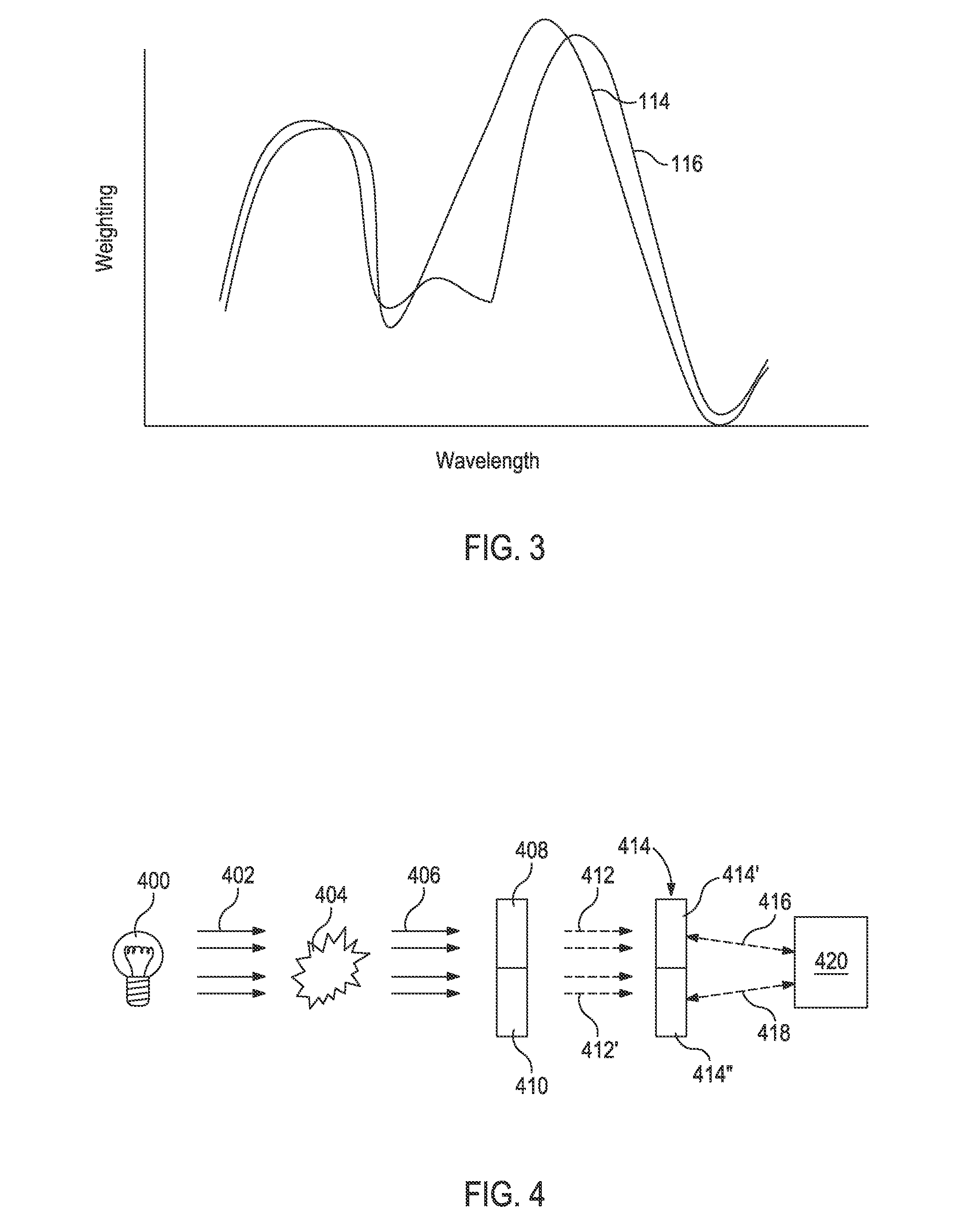Devices Having One or More Integrated Computational Elements and Methods for Determining a Characteristic of a Sample by Computationally Combining Signals Produced Therewith
a technology of integrated computational elements and devices, applied in the direction of optical radiation measurement, photometry using electric radiation detectors, instruments, etc., can solve the problems of additional delays, high cost and complexity of transitioning spectroscopic instruments from the laboratory into the field or process environment, and the inability to obtain analysis in tim
- Summary
- Abstract
- Description
- Claims
- Application Information
AI Technical Summary
Benefits of technology
Problems solved by technology
Method used
Image
Examples
Embodiment Construction
[0023]The present disclosure relates to devices and methods for determining a characteristic of a sample using one or more integrated computational elements, and, more specifically, to devices and methods that computationally combine detector output signals produced from electromagnetic radiation that has optically interacted with one or more integrated computational elements.
[0024]Heretofore, it has been conventional practice in the field of optical computing devices to utilize one integrated computational element to detect one characteristic in a sample or multiple integrated computational elements to detect a like number of characteristics (i.e., in a one-to-one relationship). For example, commonly assigned U.S. Pat. No. 7,911,605 and United States Patent Application Publication 20100153048, each of which is incorporated herein by reference in its entirety, describe in great detail how to design and construct integrated computational elements having a desired performance for a si...
PUM
 Login to View More
Login to View More Abstract
Description
Claims
Application Information
 Login to View More
Login to View More - R&D
- Intellectual Property
- Life Sciences
- Materials
- Tech Scout
- Unparalleled Data Quality
- Higher Quality Content
- 60% Fewer Hallucinations
Browse by: Latest US Patents, China's latest patents, Technical Efficacy Thesaurus, Application Domain, Technology Topic, Popular Technical Reports.
© 2025 PatSnap. All rights reserved.Legal|Privacy policy|Modern Slavery Act Transparency Statement|Sitemap|About US| Contact US: help@patsnap.com



